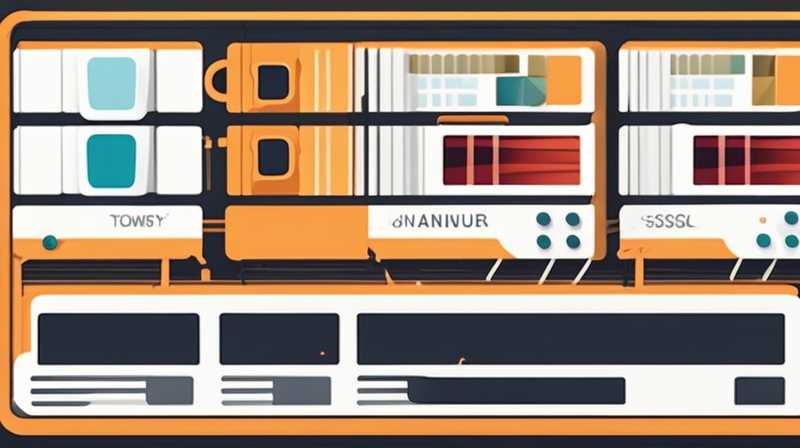
To effectively maintain a solar power system and ensure optimal performance, one must focus on 1. Regular Cleaning, 2. Monitoring Performance, 3. Inspecting Components, 4. Inverter Maintenance. Each aspect plays a vital role in prolonging the lifespan of the system and maximizing energy output.
1. REGULAR CLEANING
Maintaining a solar power system begins with routine cleaning of the panels. Dirt, dust, and debris can significantly hinder the efficiency of solar panels. Regular cleaning helps ensure that sunlight can effectively penetrate the solar cells, optimizing energy conversion. Depending on the geographical location, environmental factors, and the design of the installation, the frequency of cleaning can vary. In arid regions, where dust accumulation is higher, panels may require more frequent cleanings, perhaps every month or every rain season.
Cleaning methods should be gentle yet effective to avoid scratching the surface of the solar panels. Using a soft sponge or microfiber cloth, along with mild soap or a dedicated solar panel cleaning solution, is recommended. It’s important to ensure that cleaning takes place early in the morning or late in the afternoon to avoid thermal shock, which can occur when cool water is applied to hot panels.
2. MONITORING PERFORMANCE
Routine performance monitoring of a solar power system is crucial for identifying any inefficiencies or functional issues early. Most modern systems come with monitoring software that tracks energy production and other key metrics in real-time. By regularly reviewing these statistics, one can assess whether the system is functioning at expected levels.
In many instances, comparing the actual energy output against estimated performance can reveal discrepancies. If the system underperforms, it may be time to investigate further by checking for shading, system orientation, or potential malfunctions. Various online resources or applications facilitate performance tracking, allowing users to stay informed regarding energy production trends. Likewise, awareness of seasonal variations in production can aid in understanding discrepancies.
3. INSPECTING COMPONENTS
Conducting routine inspections of all system components is imperative for long-term functionality. The focus should be on checking connections, wiring, and mounting systems for any signs of wear or damage. Potentially hazardous issues, such as corroded connections or loose wires, need immediate attention to prevent further damage or system failure.
Physical inspections should ideally occur every six months. During this examination, particular attention should be paid to areas prone to water intrusion or debris accumulation. Regularly inspecting the mounting structures will ensure that they remain secure amid environmental stressors such as wind or snow.
Besides physical inspections, regular maintenance of battery storage systems is equally vital. Users must ensure that battery terminals are free from corrosion, and fluid levels are appropriately maintained in flooded lead-acid batteries. Additionally, a knowledgeable technician should evaluate deep-cycle batteries periodically to ensure their health and longevity.
4. INVERTER MAINTENANCE
The inverter serves as the fundamental component in converting the direct current (DC) generated by the solar panels into alternating current (AC) used by home appliances. As a critical part of the solar power system, regular inverter maintenance is essential. Inverter performance can be monitored through built-in performance monitoring features, allowing users to ensure healthy operation without external assistance.
If an inverter malfunctions, it may drastically affect energy production, emphasizing the importance of attention to detail. Notably, regular inspection schedules should coincide with the overall system checks, which can uncover potential issues before they develop into larger problems.
Additionally, modern inverters often come with system alerts that notify homeowners of any performance drop or operational issue. Ensuring that these alert systems are functional can facilitate immediate remediation when necessary. Technicians often recommend replacing inverters every 5 to 10 years, as their efficiency can degrade over time, which highlights the importance of understanding the expected lifespan of the equipment.
FAQs
HOW OFTEN SHOULD SOLAR PANELS BE CLEANED?
The frequency of solar panel cleaning can vary based on environmental factors and location. In areas with heavy dust, pollen, or bird droppings, owners might consider cleaning their panels every month or even bi-weekly. Conversely, regions with frequent rainfall may require less frequent cleaning, perhaps every few months. Regular assessments will help establish the necessary cleaning schedule. Additionally, routine inspections can track efficiency; if energy production decreases substantially while weather patterns remain constant, it may signal the need for cleaning.
WHAT ARE THE SIGNS OF A MALFUNCTIONING INVERTER?
Several indicators can suggest an inverter is not functioning correctly. First, observing the energy generation data via monitoring software can provide a clear picture of performance discrepancies compared to expected output. Error codes, which some inverters may display, are essential in diagnosing problems. If the inverter exhibits persistent errors, it may require professional inspection. Routine maintenance can prevent potential failure, ensuring longevity.
CAN I MAINTAIN A SOLAR POWER SYSTEM MYSELF?
While homeowners can manage some aspects of solar power system maintenance, such as cleaning panels and monitoring performance, various components may necessitate professional expertise. Notably, complex electrical inspections and component replacements are best handled by certified technicians. Individuals should conduct basic daily monitoring and cleaning while relying on professionals for detailed system inspections. This approach combines convenience with professional assurance of system integrity.
Maintaining a solar power system is critical to ensuring its efficiency and longevity. Each component, from panels to inverters, requires attention and regular assessment. Continuous monitoring and timely cleaning can help address minor issues before they escalate into major problems. By adopting a proactive approach, solar power system operators can enjoy the benefits of sustainable energy with minimal disruptions. The diligence involved in keeping these systems optimized translates to better energy output and longer life spans for the hardware involved. In summary, a well-maintained solar power setup contributes significantly not only to the individual’s energy needs but also supports broader environmental goals by enhancing the overall efficacy of renewable energy utilization.
Original article by NenPower, If reposted, please credit the source: https://nenpower.com/blog/how-to-maintain-a-solar-power-system/


